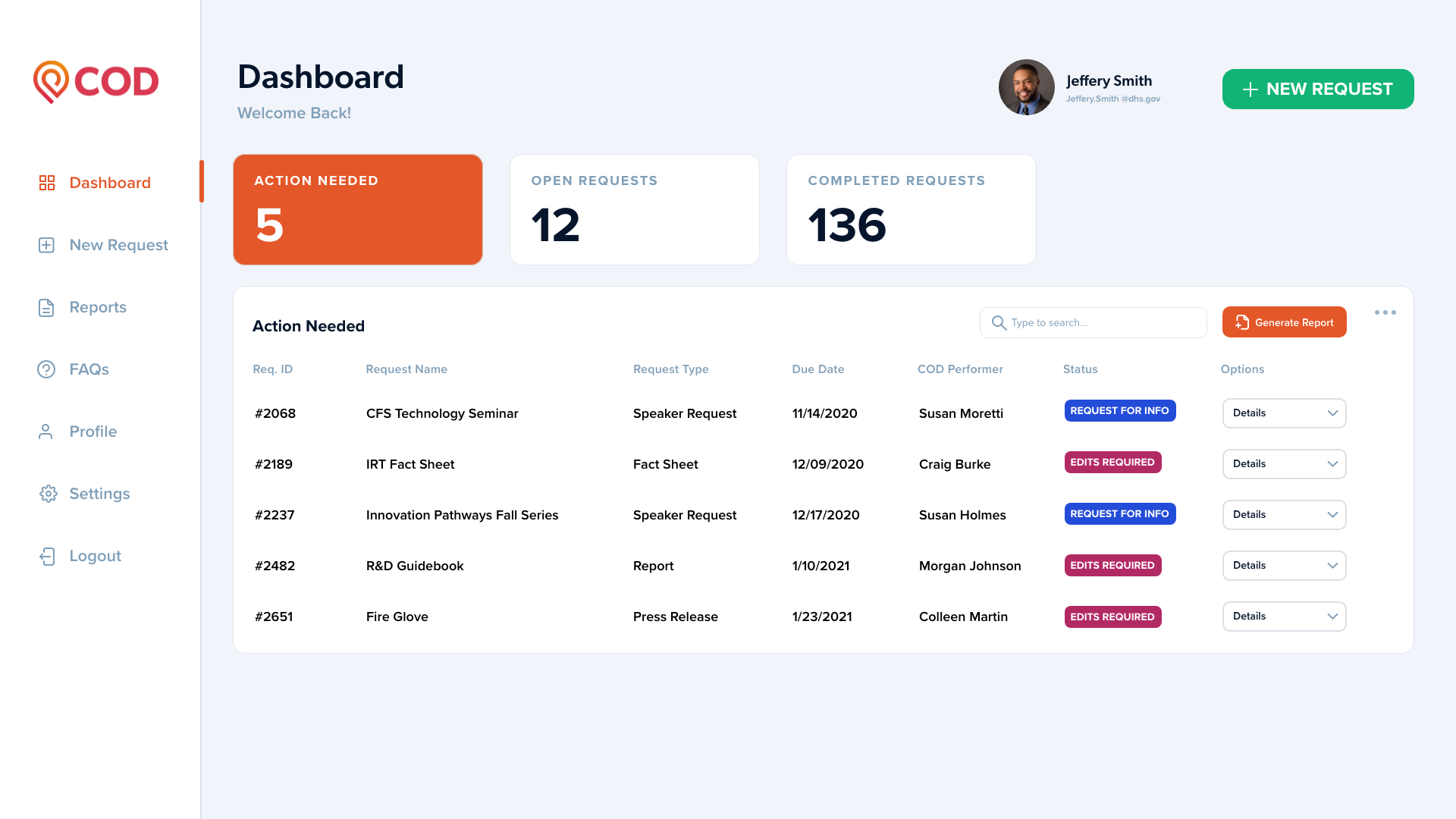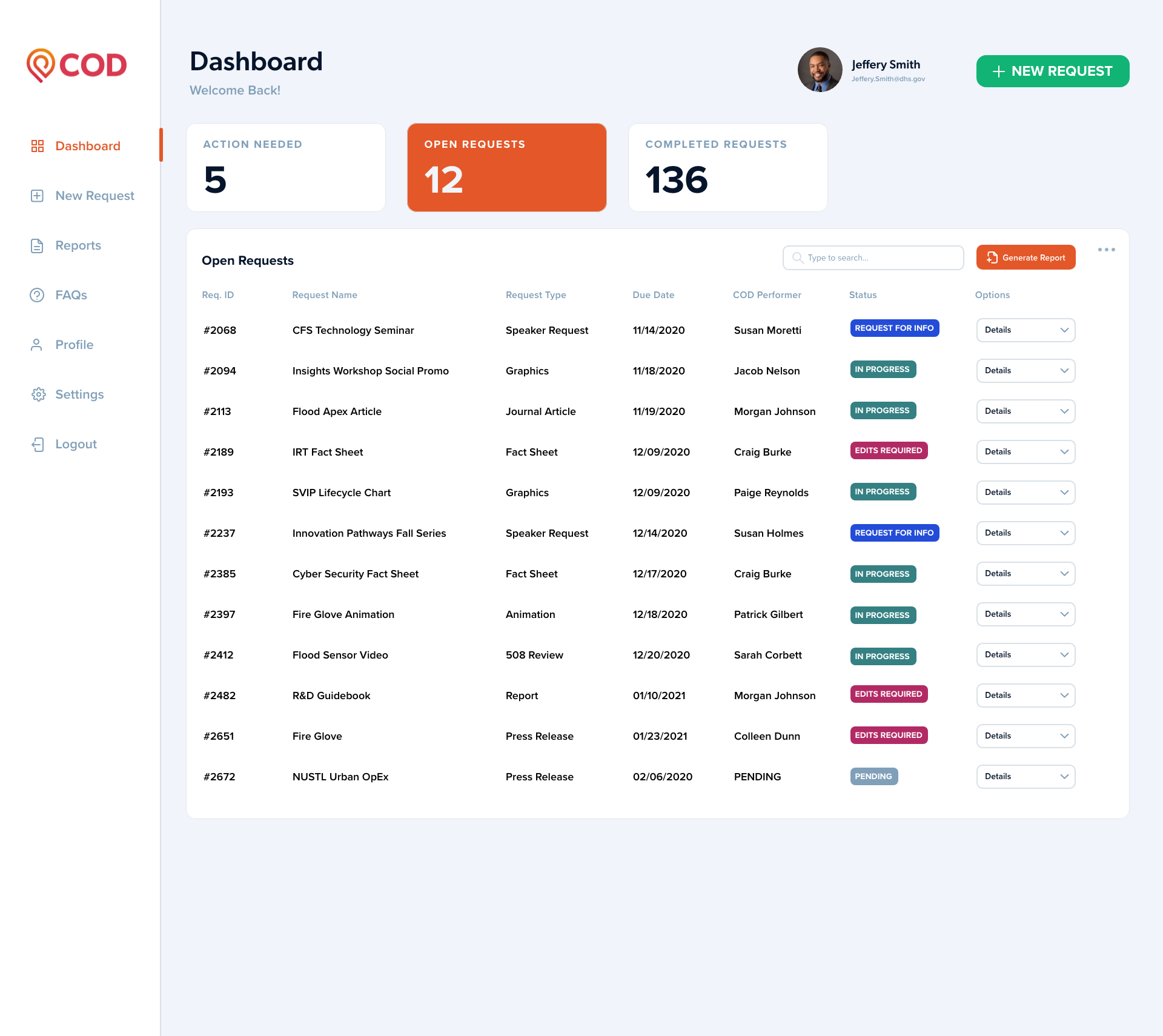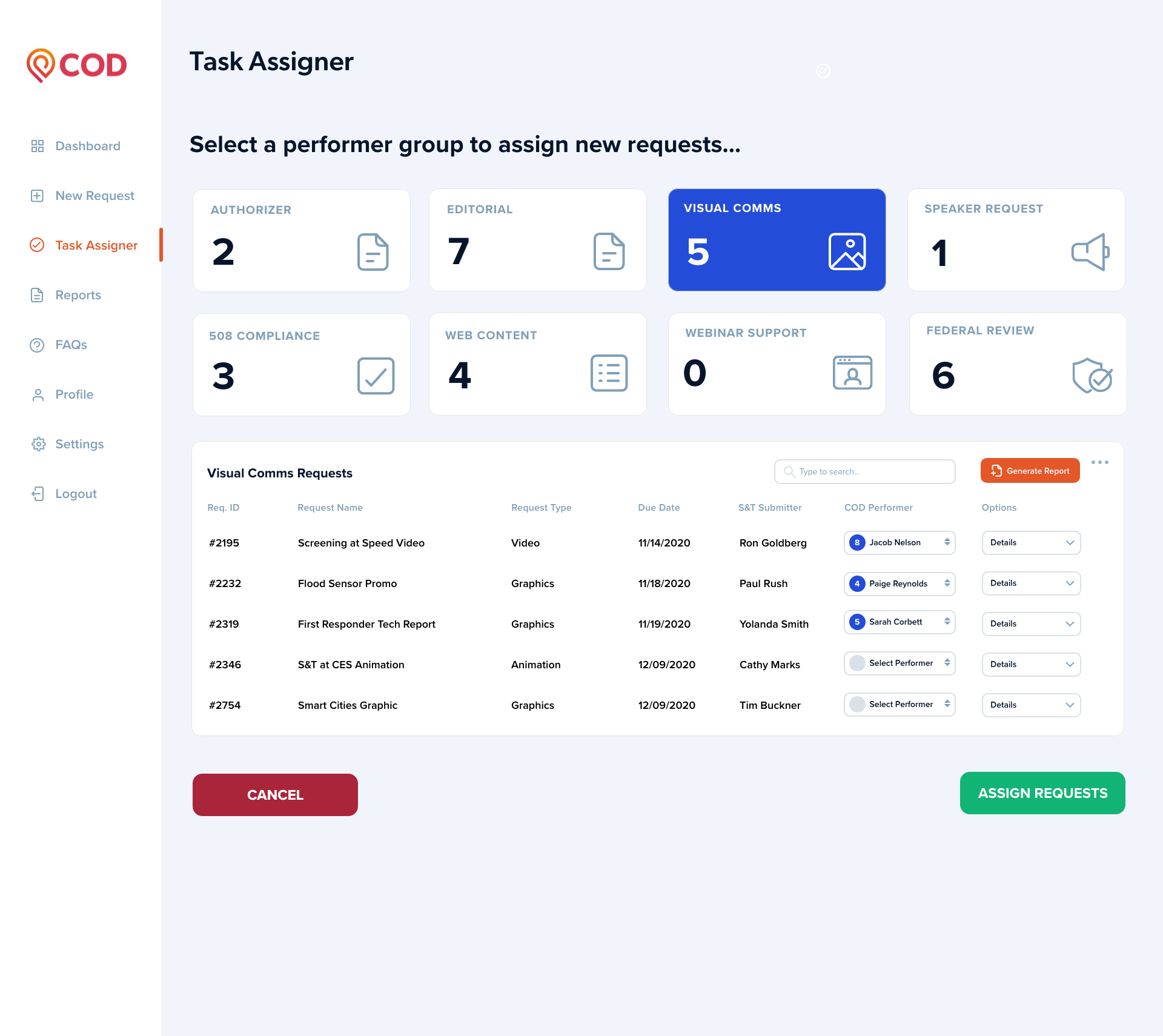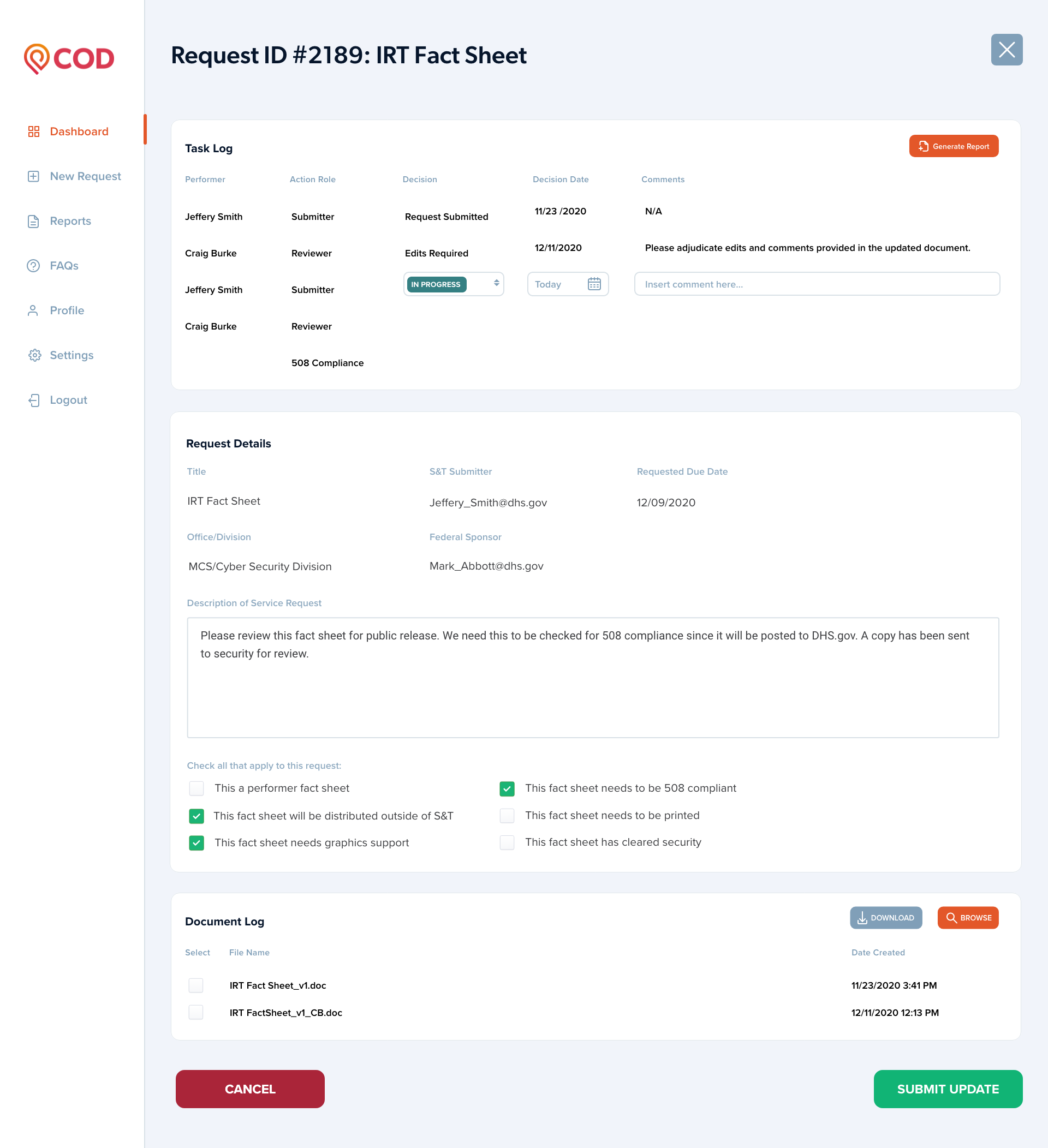COD Service Tracker
Consolidating three task tracking portals into a seamless singular system.
Sector:
Government
Client:
U.S. Department of Homeland Security
Science and Technology Directorate
Communications & Outreach Division
Role:
Product Management | Product Strategy | Lead User Researcher | Lead UX Designer
Background
The Communications and Outreach Division (COD) at the DHS Science and Technology Directorate (S&T) provides a variety of internal and external communications services in support of S&T. Depending on the required service, S&T customers were utilizing three different tracking systems to submit requests – Public Release, Visual Communications, and Speaker Requests.
Our design team was tasked with developing a singular platform for S&T users to submit all service requests to COD. The consolidated system would make the submission process simple and seamless for S&T customers, while providing an improved project management tool with proper routing, tracking, and visibility for COD staff.
Research
Analysis
We conducted a comprehensive analysis of all existing portals to understand their current functionality, issues, and commonalities.
User Observations
Our team observed both customers and COD staff using all systems to understand how they were currently being utilized.
Interviews
We conducted interviews with both user groups to gather additional information about pain-points and desired functionality.
Research Findings
Our observations and interviews were instrumental in ascertaining the situations and capabilities that needed to be addressed with the new system.
COD Performer Needs
A singular system that provides all COD staff visibility to all service requests and their current assignment/status
A system that supports management/flow of a request by routing it through the proper steps in accordance with COD’s processes
Intake forms that require the customers to provide all necessary information
Provides the ability to assign/track sub-task
Collects and outputs metrics data that can be utilized for tracking trends, work load, and ROI
S&T Customer Needs
A singular system to submit all COD service requests
To know what services COD provides
To know what information they need to provide COD for their request to be completed
To submit a larger project with multiple sub-tasks that each require different services and deadlines
To know the status of their request
Design & Build
Process Flows
Our team worked closely with COD to develop a consolidated list of 20 service offerings. We then built out workflows for each service - identifying all possible pathways a service request could take based on the customer’s needs and COD's processes and procedures.
Intake
We architected a new question-based intake framework with an emphasis on simplicity, improving customer transparency, and gathering all required information from the submitter. The question format also helped define the workflow on the back-end based on the users answers.
As we jumped in to wire-framing, our team also experimented with a "shopping-cart" like experience where the users had the ability to add multiple services under one large umbrella project - tapping into the familiar experience of on-line shopping.
User Testing
Once a prototype was developed by the design and development team, we utilized task scenarios to test the usability of the system with users. We tested across the three main facets - service request submissions, task management/assigning, and the user dashboard.
Testing revealed some confusion around labeling and consistency issues with use of color and button placements, input fields lacking enough space and unclear directions.
Launch
Our team lead the transition of phasing out the three old systems, while providing training, tools and support with on-boarding staff for the new platform.






Takeways
The design process was unlike any I had ever experienced, given the system’s complexity and the interdependent nature of the service workflows. Designing and building a product to meet the demands of three existing systems, to improve the user experience, and to achieve project management needs was no small feat, but I’m extremely proud of how our team rose to the challenge.
The time dedicated in the research phase with the refinement of process flows proved to be critically important in our collaboration with the developers. As with any newly deployed product, we had to work out some of the kinks and users had to welcome the change, but it didn’t take long before the simplicity and ease of the new system was embraced.





